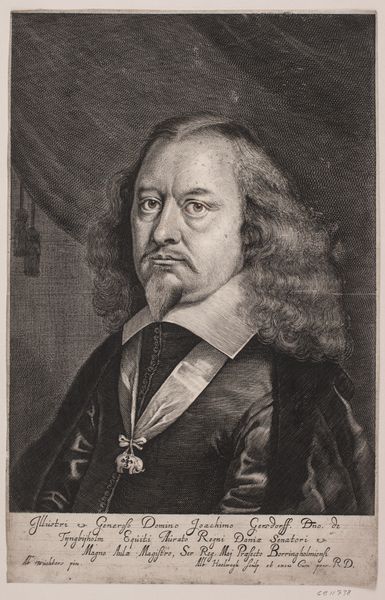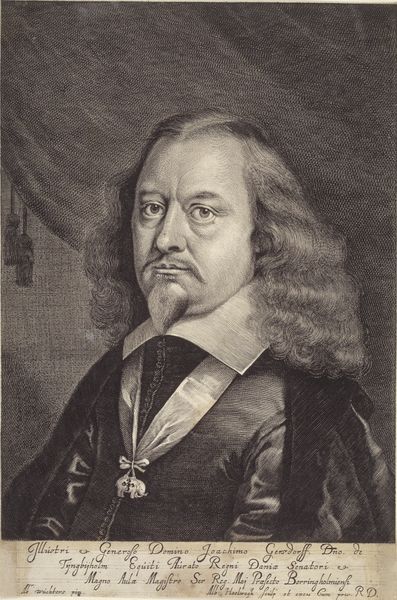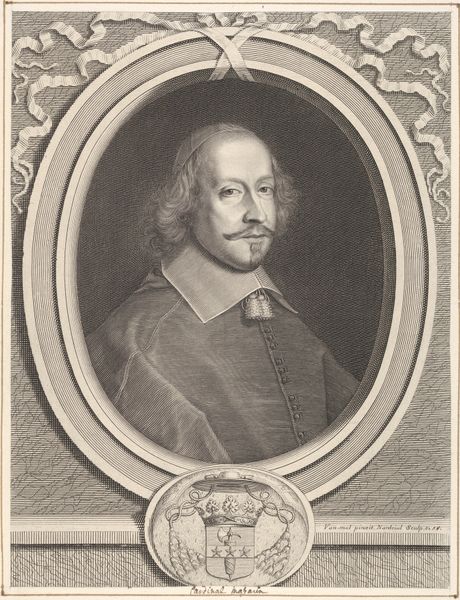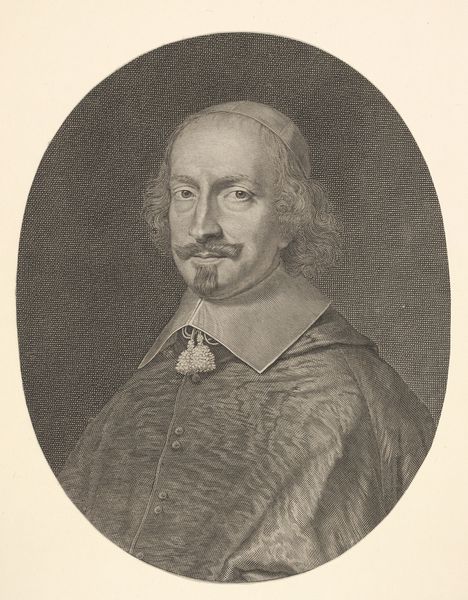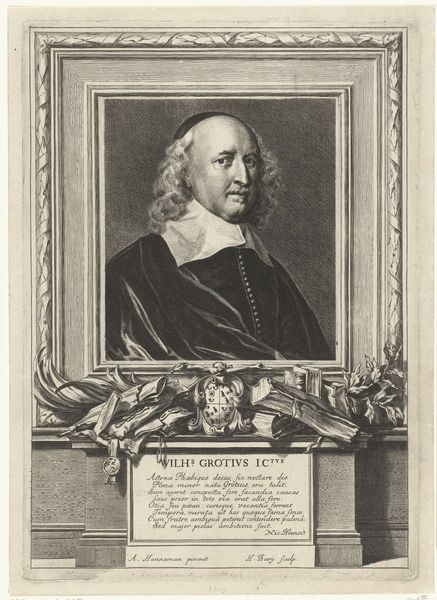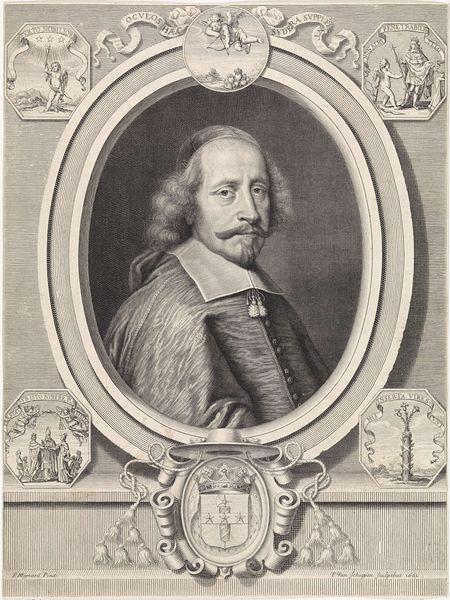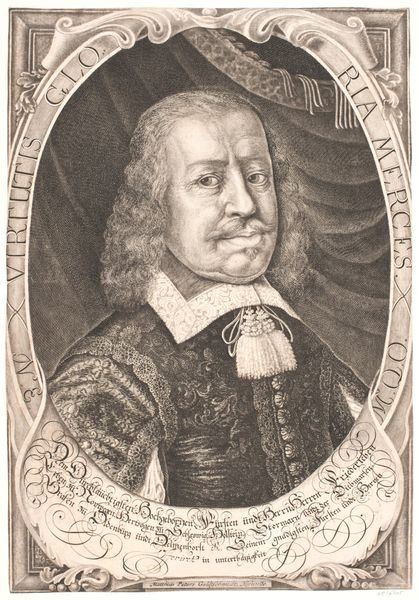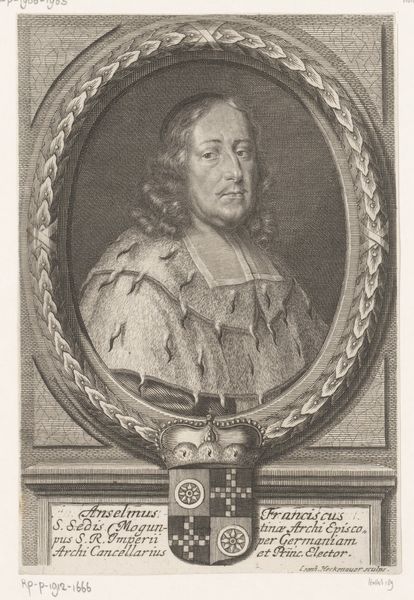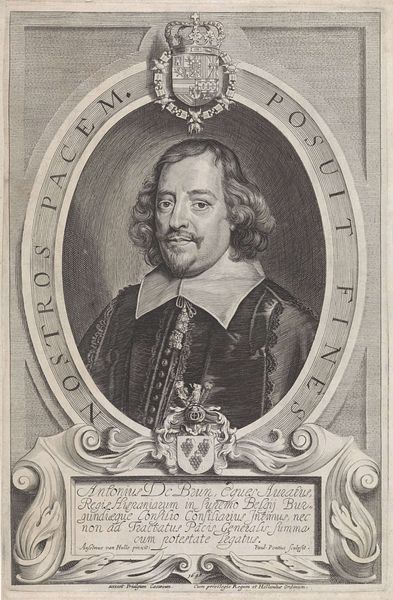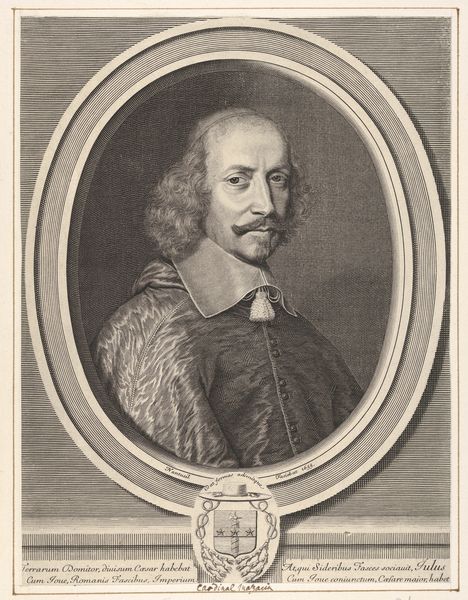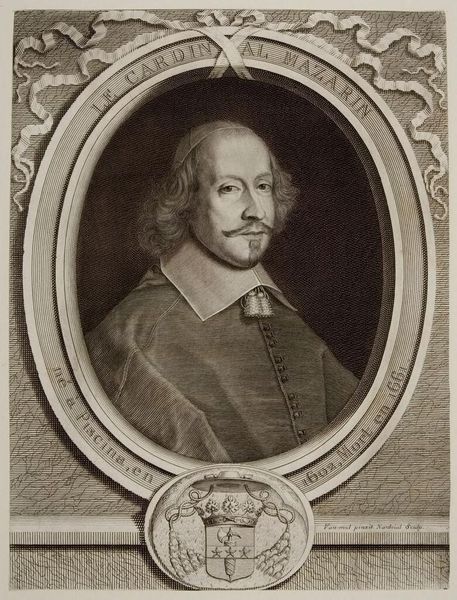
print, engraving
#
portrait
#
baroque
# print
#
engraving
Dimensions: 325 mm (height) x 206 mm (width) (bladmaal)
Curator: Standing before us is an engraving dating from 1655 to 1659, a portrait of Joachim Gersdorff by Albert Haelwegh, housed here at the SMK. It's a remarkable example of Baroque printmaking. Editor: Baroque indeed. My first thought? Dignified and a tad melancholy. He's got that 'weight of the world' look about him. The lines of the engraving create such intense textures, the fabrics practically rustle. Curator: Haelwegh situates Gersdorff within a historical context that speaks volumes. Gersdorff was a key figure in Danish politics and aristocracy. The portrait, therefore, is not just an image but a carefully constructed representation of power. His gaze, the cut of his garments, are intended to portray his social standing. Editor: Absolutely, it's a stage. Look at the drape behind him – that carefully shaded background. He is front and center, lit for drama. It’s so precise, every little detail feels significant, but perhaps slightly stiff and formal. A very classic and slightly expected Baroque representation, wouldn’t you agree? Curator: In the context of Baroque portraiture, there's a visual language at play—costume as a declaration of wealth and rank. Think of how these images circulated, reinforcing social hierarchies and narratives. His lace collar, the ceremonial sash... all contribute to constructing a narrative of authority. How do you perceive the symbolism within this context? Editor: Good point about circulation! I suppose for contemporary eyes, accustomed to quick digital snaps, we miss the labor, the purpose built into each line. What feels staged to me probably felt impressive back then. The weightiness I feel comes maybe from realizing how seriously this era took visual rhetoric. A bit overblown for my modern sensibilities, but fascinating! Curator: It certainly reflects how visual culture shapes historical understanding. Considering identity and representation in early modern Europe encourages questions of who had access to these constructed visual narratives. Editor: Definitely something to consider further about access, given the labor, distribution and display practices, right? This insight offers a perspective of how Gersdorff had the wealth to create a version of himself to distribute into the world. A project he wanted to get across. Thanks for this framework! Curator: My pleasure. Seeing how our reading shifts and enriches our understanding as a whole? Wonderful!
Comments
No comments
Be the first to comment and join the conversation on the ultimate creative platform.


